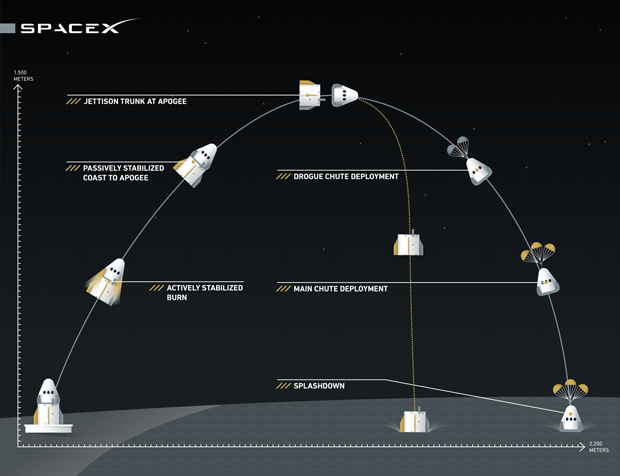SpaceX Completes Successful Dragon Capsule Abort Test, Paves Way For 2017 Manned Launch
We’ve been following SpaceX’s Dragon capsule and Falcon rocket development with the giddiness of millions of children decades ago during the lead up to NASA landing a man on the moon. With the Space Shuttle out of commission and the U.S. relying on Russia to blast our astronauts into space, it’s up to companies like SpaceX to help take over the heavy lifting when it comes to ferrying crew to and from the International Space Station (ISS).
When we last left SpaceX, the company successfully launched an unmanned Dragon capsule (making its sixth successful resupply mission) to the ISS, but had less success with its planned vertical landing of the Falcon 9 rocket on a barge platform. Close, but no cigar.
Today, however, it was all cheers and pats on the back for SpaceX’s first live launch abort test for its Dragon capsule. The Dragon capsule successfully launched (under its own power) from Cape Canaveral, Florida this morning, separated from its “trunk,” and deployed its three main parachutes before making a splashdown in the Atlantic Ocean.
The Space Shuttle didn’t have the ability to separate crew members from the orbiter in the event of a catastrophe during ascent or descent (witness the Challenger disaster in 1986 or the Columbia tragedy in 2003). It should be noted, however, that the first few Space Shuttle missions in the early 1980s featured two ejector seats which could be used in case of an emergency – those missions only included a pilot and mission commander. However, once crew counts greatly expanded, this “escape clause” was not feasible.
NASA isn’t taking any chances this time around and has determined that the next generation of capsules need an abort system to quickly distance crew members from a malfunctioning launch vehicle. So in essence, Dragon’s crew safety mechanisms will be more closely aligned with decades-old capsule designs like Gemini and Apollo.
The Dragon V2 can carry a maximum of seven crew members and the first manned missions are scheduled for early 2017.


